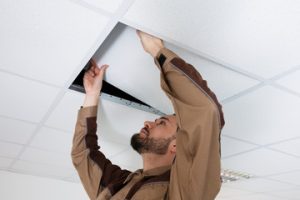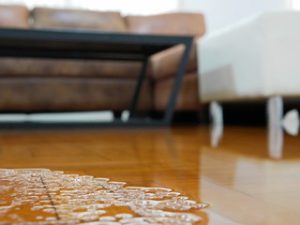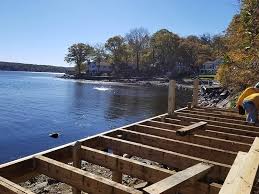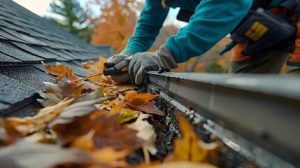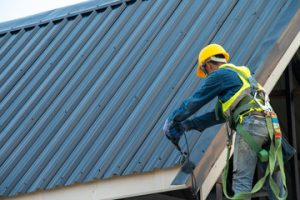Many people don’t think they need AC Repair, but getting maintenance can keep your system working properly for years to come. It can also help prevent costly repairs and replacements down the road.

A breaker that keeps tripping can indicate a problem with the circuit or electrical wiring, while leaking water around your unit could mean a clogged condensate drain line or improper unit sizing. Contact AC Repair Round Rock for professional help.
During normal use, mechanical wear and tear can happen to AC parts. This is why it’s important to keep up with routine maintenance from an experienced HVAC professional, which may include inspection of the ductwork, lubrication of moving parts, topping off low refrigerant, and checking for electrical problems.
If your AC repair technician finds mechanical problems, they can take care of them to return your system to full functionality. This might include replacing worn belts, cleaning the condensate drain line, and adjusting the blower motor speed. The best AC technicians will also check electrical components like the contactor and capacitors, as they are responsible for 80 percent of all AC repair calls.
These electrical parts are susceptible to damage from overuse, so they’ll likely need to be replaced at least once during your air conditioner’s lifespan. They are especially sensitive to heat, so it’s important to schedule an AC repair immediately when you notice any signs of a capacitor problem.
Another sign of a worn-out capacitor is short cycling, which is when the unit turns on and off frequently. This is a result of overworking the compressor and can be caused by a number of things, including dirty coils, thermostat issues, and an oversized unit. Our team can quickly identify the source of the problem and provide an AC repair, helping you save energy and money.
An AC repair technician can also help you save money by addressing inefficient cooling. Poorly insulated ductwork, dirty coils, and other factors can force your system to work harder than necessary, leading to high energy bills. Fortunately, these problems are usually easy to fix with AC repairs and can cut your energy bill by up to 20-40% a year.
While determining whether to repair or replace your AC system is a personal decision, most homeowners will find that repairs are a good option if the repair costs are less than a third of the cost of a new system. In addition, repairing your current system can extend its life by many years. However, if you’re having to repair your system often, it might make more sense to invest in a new one with higher efficiency and a long lifespan.
Refrigerant Leaks
Refrigerant leaks are a serious AC repair issue, and they’re also dangerous. Refrigerant is used to absorb heat and remove it from the air, so without it your system won’t cool the home effectively. You might notice an unexplained spike in your utility bills when this problem occurs, since the system will have to work overtime to compensate for low refrigerant levels.
A leaking refrigerant can cause your system to suffer from severe damage, and it may be more cost-effective in the long run to replace the unit entirely. Depending on the size of the leak and its location, professionals use various techniques to seal and repair them, including epoxy, resin-based sealants, or mechanical fittings.
Leaks often happen in the evaporator coil or in the lines that transport refrigerant throughout the system. These are areas that can be prone to corrosion or wear and tear, as well as temperature changes and vibrations. Eventually, these problems will lead to leaks, which usually begin as pinhole-sized holes.
Another common sign of a refrigerant leak is the smell of chemicals or burning. This is because a lack of refrigerant forces the evaporator coil to work overtime, which can burn out or degrade the coil and create an unpleasant burning odor.
If you suspect a refrigerant leak, contact an AC repair specialist right away. They’ll use soap bubble tests or other methods to determine the extent of the leak and repair it.
In some cases, a professional may recommend using a refrigerant sealant as a stopgap measure. However, this can end up doing more harm than good, as sealants are not always effective and can block the system from working correctly.
A leaking refrigerant is more likely to occur in older air conditioning units, as the lines that transport this chemical can wear out and develop cracks over time. They can also be damaged by physical damage, such as rocks, branches, or debris thrown into the unit by a storm or punctured by lawn mowers and other outdoor equipment. Leaks can also be caused by manufacturing defects or poor installation.
Thermostat Issues
When your thermostat isn’t working, your cooling system doesn’t get the signals it needs to run. This can lead to an ineffective AC and high energy bills. This type of AC problem is often the result of a thermostat malfunction or improper installation.
When you adjust the temperature on your thermostat, it should immediately react and send signals to your air conditioner to start running. If you notice that your thermostat isn’t responding, you may need to replace its batteries or check the breaker box for a tripped one. If this doesn’t solve the issue, call a professional to inspect your air conditioning unit and make repairs if needed.
Another common thermostat issue is when the indoor temperatures don’t match the reading on the thermostat. This can be caused by a number of issues, such as dirty air filters, uneven insulation or untight ductwork. It can also be a sign of an electrical problem in your home, including faulty wiring or a blown fuse.
If you can’t find the source of your problem, try cleaning out your vents to remove any blockades that are hindering airflow. Toys, drapes and other items can get into the path of return and supply vents, leading to airflow restrictions and reduced efficiency. Similarly, foliage can get inside the outdoor unit or around the thermostat, causing it to malfunction.
It’s important to set expectations with your HVAC service provider about how long it will take to address minor problems in your cooling system. This will help both parties to avoid any unnecessary frustration and keep the repair process moving smoothly. Effective communication is a vital part of this process, which should extend after the repair is complete as well. This is an opportunity for you to ask your HVAC service provider any questions you have and to ensure that you understand what’s been fixed and why it needed to be done. This will empower you to prevent similar problems from occurring in the future, which can increase your home comfort and reduce your utility bills.
Electrical Issues
Electricians and HVAC technicians are trained to spot and address AC electrical issues. If left unchecked, these problems can lead to system shutdowns or even major damage. It is important to catch early warning signs like tripped breakers, frequent shutdowns and faulty wiring.
AC electrical problems are more common during summer, when temperatures rise and the system works harder. This puts a greater strain on components, especially older systems or those without regular maintenance. The best way to prevent these issues is to ensure you get regular inspections and routine maintenance from a professional.
Thermostat Issues
One of the most common AC electrical problems is a malfunctioning thermostat, which can be caused by dead batteries, incorrect settings or faulty sensors. It is a good idea to check the thermostat regularly and replace the batteries as needed. If the problem persists, it may be time to call in a professional for a more in-depth look at the thermostat and its connections.
Circuit Breaker Problems
A tripped circuit breaker can be a sign of serious electrical issues, including a bad capacitor or an overloaded compressor. If you notice your breaker keeps tripping, it is best to turn it off and leave it off for half an hour before turning it back on. This will give the system a chance to reset itself and will allow you to determine whether the problem is with your breaker or a more serious electrical issue.
You should also check the outside unit to see if there is a clog in the condensate drain line. A clog can cause your system to overheat and shut down, so it is essential to clear the line as soon as you notice it is clogged. A clogged condensate drain line can also make your AC work harder, leading to reduced airflow and efficiency. This is best done by a professional, as they have specialized tools and can clean the line thoroughly to prevent future clogs. You should never attempt to repair a clogged line yourself, as this can be dangerous and cause further damage.

